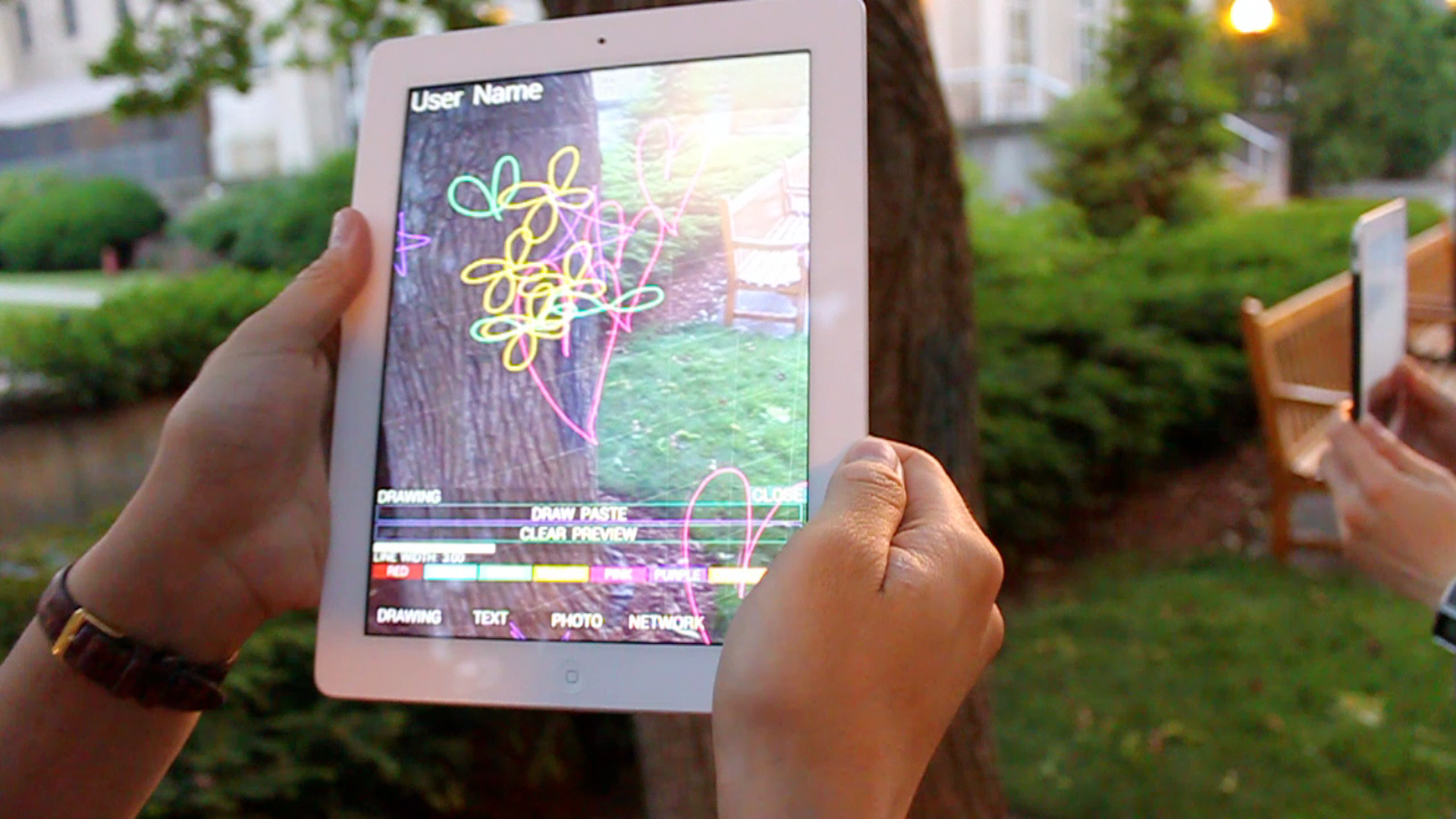“Second Surface: Multi-User Spatial Collaboration System Based on Augmented Reality” by Kasahara, Heun, Lee and Ishii
Conference:
Experience Type(s):
Title:
- Second Surface: Multi-User Spatial Collaboration System Based on Augmented Reality
Organizer(s)/Presenter(s):
Description:
An environment for creative collaboration is significant for enhancing human communication and expressive activities, and many researchers have explored different collaborative spatial interaction technologies. However, most of these systems require special equipment and cannot adapt to everyday environment. We introduce Second Surface, a novel multi-user Augmented reality system that fosters a real-time interaction for user-generated contents on top of the physical environment. This interaction takes place in the physical surroundings of everyday objects such as trees or houses. Our system allows users to place three dimensional drawings, texts, and photos relative to such objects and share this expression with any other person who uses the same software at the same spot. Second Surface explores a vision that integrates collaborative virtual spaces into the physical space. Our system can provide an alternate reality that generates a playful and natural interaction in an everyday setup.
References:
[1] Foad Hamidi and Melanie Baljko. 2012. Using social networks for multicultural creative collaboration. In Proceedings of the 4th international conference on Intercultural Collaboration (ICIC ’12). ACM, 39–46.
[2] D. W. F. van Krevelen, R. Poelman. 2010. A Survey of Augmented Reality Technologies, Applications and Limitations, The International Journal of Virtual Reality, Vol. 9, No. 2, pp. 1–20.
[3] Wanger, D. 2009. History of Mobile Augmented Reality, Communications. Retrieved from https://www.icg.tugraz.at/~daniel/HistoryOfMobileAR
[4] Qualcomm, Vuforia#8482;: http://www.qualcomm.com/solutions/augmented-reality
[5] Layar. Layar. http://www.layar.com
[6] Metaio. Junaio. http://www.junaio.com
[7] Stiktu. http://www.stiktu.com
[8] String. Scrawl. http://www.poweredbystring.com/showcase
[9] George W. Fitzmaurice. 1993. Situated information spaces and spatially aware palmtop computers. Commun. ACM 36, 7, 39–49.
[10] Poupyrev, I., Tomokazu, N., Weghorst, S. 1998. Virtual Notepad: handwriting in immersive VR, Virtual Reality Annual International Symposium, Proceedings., IEEE 1998, vol., no., pp. 126–132, 18–18 1998
[11] Michael Tsang, George W. Fitzmzurice, Gordon Kurtenbach, Azam Khan, and Bill Buxton. 2003. Boom chameleon: simultaneous capture of 3D viewpoint, voice and gesture annotations on a spatially-aware display. In ACM SIGGRAPH 2003 Papers (SIGGRAPH ’03). ACM, New York, NY, USA, 698–698.
[12] Schmalstieg, D., Fuhrmann, A., Hesina, G. 2000. Bridging multiple user interface dimensions with augmented reality, Augmented Reality, 2000. (ISAR 2000). Proceedings. IEEE and ACM International Symposium on, vol., no., pp. 20–29, 2000.
[13] Georg Klein and David Murray. 2009. Parallel Tracking and Mapping on a Camera Phone. In Proc. International Symposium on Mixed and Augmented Reality (ISMAR’09, Orlando). 83–86.
[14] N. Snavely, S. M. Seitz, and R. Szeliski. 2006. Photo tourism: Exploring photo collections in 3d. In SIGGRAPH Conference Proceedings, pages 835–846, New York, NY, USA, 2006. ACM Press.





